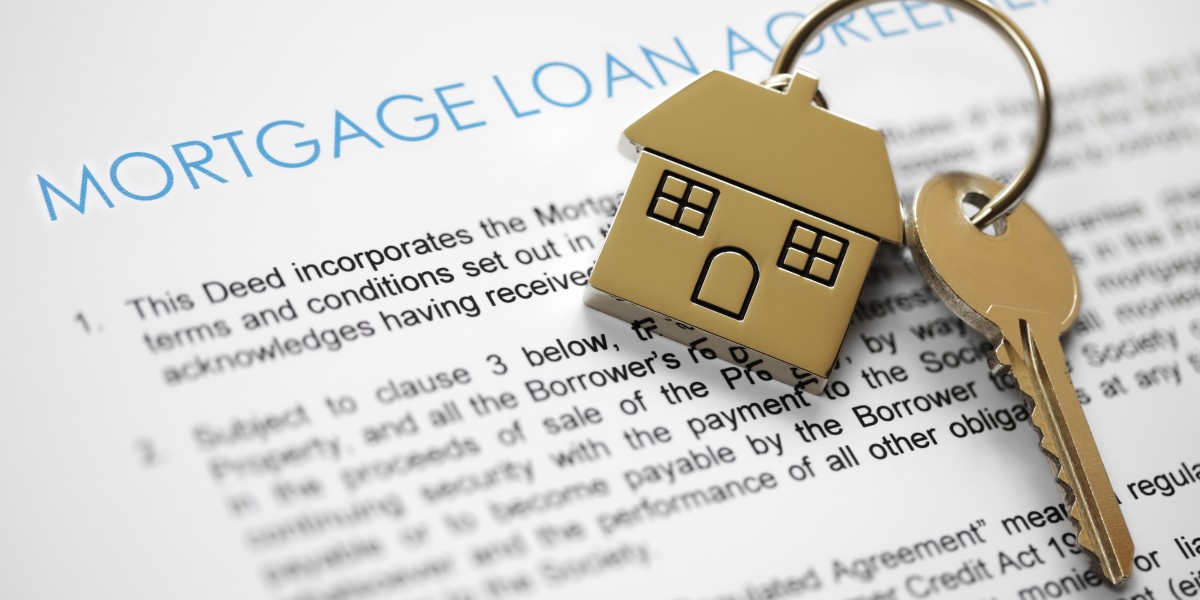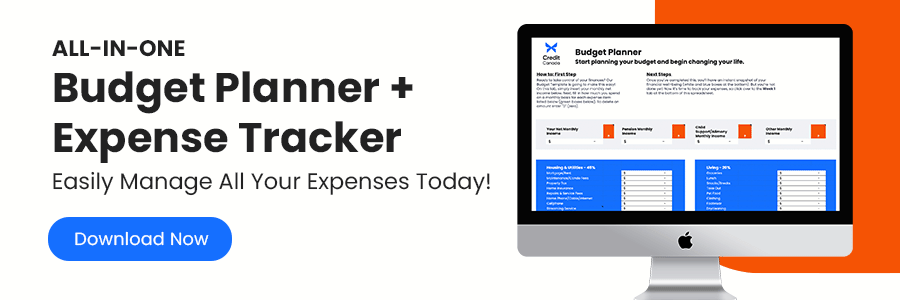Table of Contents
- What Is a Variable Rate Mortgage?
- What Happens if the Prime Rate Changes?
- Terms to Know when Looking at Variable Rate Mortgages
- Questions to Ask Yourself when Considering Switching to a Variable Rate Mortgage
- How Much Mortgage Can I Afford?
- What Do You Stand to Benefit from This?
- How Is My Credit Score Now vs When I Got My Mortgage?
- What’s the Current Prime Rate?
- What’s the Penalty for Breaking My Current Mortgage?
- Benefits of Variable Rate Mortgages
- Need Help Dealing with Debt?

If your mortgage is set to renew or you’re just wondering what you should be doing, you might start shopping around for a better deal. But, what should you do if you have the “itch to switch?” You might be considering a variable rate mortgage to replace your current fixed-rate mortgage.
But, is a variable-rate mortgage right for you? How do mortgages work when they’re “variable rate?” What are the benefits of being on a variable-rate mortgage? Most importantly, which option is best for helping you manage your debt?
What Is a Variable Rate Mortgage?
A variable rate mortgage is a mortgage where the interest rate may change throughout the term of the mortgage to keep pace with the Bank of Canada’s lender's’ prime rate.
This variable mortgage rate can be set at either a discount or a premium compared to the prime lending rate. For example, say that you apply for a loan when the prime lending rate is 6.70%. If you had really good credit, the bank might set your mortgage rate at 0.2% lower than the prime rate, making your initial mortgage interest rate 6.50%. If your credit wasn’t so strong, they might set it 0.2% above the prime rate, making your initial mortgage interest rate 6.90%.
What Happens if the Prime Rate Changes?
When you’re on a variable rate mortgage, if the prime lending rate changes during your mortgage term, then the interest rate for your mortgage will also change. How this affects your mortgage payments will vary depending on the terms of your variable rate mortgage agreement.
For example, some variable rate mortgages have fixed monthly payments—you only pay a set amount of money each month regardless of how the prime lending rate changes each month. In this case, the only difference is how much of your mortgage payment would go towards paying off your principal and how much would go towards interest. When the rate goes down, more of your money goes towards the principal and you can pay off your mortgage faster. When it goes up, more money goes towards interest and you pay off your mortgage slower.
Other mortgages might have payments that adjust with changes in the prime lending rate. If the prime rate goes up, so does the amount of money you have to put towards your mortgage. If it goes down, your mortgage payment shrinks. This tends to make it easier to predict how many payments you have to make between the start of your mortgage and the end of it.
For mortgages where the payments change with the current Canada prime rate, the frequency of the change may differ from one agreement to the next. For example, some mortgages may change on a monthly basis while a “lock and roll” mortgage would change once every six months.
Terms to Know when Looking at Variable Rate Mortgages
When looking at your mortgage and comparing variable vs fixed-rate mortgages, there are a few important terms to know before you get started. Knowing what these terms mean can help you better navigate the complex agreements that your lender will offer so you can make a more informed decision:
- Adjustable Rate Mortgage (ARM). Basically another way of saying “variable rate mortgage.” It’s a mortgage where the rate may change in relation to the current prime rate (or another index of some kind).
- Amortization Schedule. A schedule showing when a mortgage will be cleared through regular monthly payments and how the balance between interest and principal payments will shift over time.
- Amount Financed. How much money you’re borrowing from the bank/lender. This typically doesn’t include any fees the lender may be charging you.
- Basis Point. A way to express changes to the prime lending rate. A basis point is 1/100th of a percent (i.e., 0.01%). So, if the prime rate is 6.70% and decreases by 20 basis points, the new prime rate would be 6.50%.
- Credit Score. A measure of how “trustworthy” you are as a borrower based on your credit history. As a consumer, you can get a copy of your credit report and score by checking with one of the major credit bureaus (Equifax and TransUnion).
- Debt Consolidation Mortgage. This is when you consolidate other forms of debt into your mortgage. This practice leverages the equity in your home to help cover your debt.
- Down Payment. The amount of money you need to put down towards the purchase of the home when initially signing up for a mortgage.
- Fixed Rate Mortgage. A mortgage where the interest rate is set at the time of the agreement and doesn’t change regardless of whatever happens to the prime rate.
- Open Fixed Rate Mortgage. A mortgage where you can prepay the mortgage in part or in full or even change the mortgage term at any time without penalty.
- Closed Fixed Rate Mortgage. A mortgage where the payments are set at the start of the term and cannot be changed until the end of the term. These may have lower interest rates than open fixed rate mortgages to entice you to choose this option.
- Home Equity. Equity is the difference between the value of your home and the amount you owe on your mortgage. For example, if you have a home worth $300k and owe $100k on your mortgage, then you would have $200k of equity. You could borrow against that equity using a home equity loan or a home equity line of credit (HELOC).
- Interest Rate. In mortgages, this is a surcharge from the bank for borrowing their money to complete the purchase of your home—expressed as a percentage of the loan. This rate can either be fixed or variable depending on the terms of the loan.
- Interest Rate Cap. A ceiling on how much the interest rate can climb during a single year or term for a variable/adjustable-rate mortgage. For example, say you have a 3% variable mortgage interest rate and the prime rate goes up from 3% to 7% in a year, but your interest rate cap is 2%. In this instance, your interest rate could only go up to 5%, not 7%.
- Prime Rate. The prime rate, or prime lending rate, is the interest rate on loans that banks would give their best customers. It is determined by the Bank of Canada’s prime rate.
- Subprime Mortgage. A mortgage for borrowers who don’t qualify for the prime mortgage rate—possibly due to bad credit. This is a higher interest rate loan than a prime rate loan would be.
- Variable Rate Mortgage. A mortgage where the interest rate may change depending on the current prime lending rate.
- Open Variable Rate Mortgage. A mortgage where you can make as many early payments as you want, pay off the entirety of the balance at any time, or switch to another term at any time without penalty.
- Closed Variable Rate Mortgage. A mortgage with fixed monthly payments and limited prepayment/early payoff options. When the prime rate changes, the amount of money going towards the principal balance will change as well, though your actual payment amount remains the same.
- Adjustable Rate Adjustable Payment Mortgage. A variable rate mortgage where the payment amount may change each month in response to changes in the prime lending rate.
- Lock and Roll Mortgage. A mortgage where interest rates and payments are fixed for a set period of time (such as six months), and then are adjusted at the beginning of the next period to account for changes in the prime rate.
These are just a few of the terms that you might run across when investigating your mortgage options. There are a lot more specialized terms that can appear in an actual mortgage agreement or in your discussions with a lender. If you come across terms you aren’t familiar with in your mortgage agreement, be sure to ask the lender what they mean and how they might affect your mortgage payments.
Questions to Ask Yourself when Considering Switching to a Variable Rate Mortgage
Before making the switch to a variable rate mortgage (or signing up for a new mortgage), there are a few questions that you should ask yourself, such as:
1. How Much Mortgage Can I Afford?
Knowing how much mortgage you can afford is a critical step in buying a new home or renegotiating your existing mortgage. You don’t want to buy “too much home,” since that can end up costing you in the long run and make it harder to stay or get out of debt.
Before applying for a new mortgage or renegotiating your existing mortgage, take some time to evaluate your budget. Look at what your current monthly income is versus your monthly expenses and use that to establish a baseline for how much mortgage you can comfortably afford.
For example, if you make $6,000 a month, and $3,500 of that goes to expenses other than housing, then your maximum monthly budget would be $2,500—though that would be riding it too closely. Instead, you might want to shop around for a mortgage with a monthly payment of $1,500 or less (or find ways to cut unnecessary expenses from your budget).
Remember: you don’t have to take the maximum mortgage loan the bank offers to you. If you can find a less expensive home that doesn’t cost the full amount of the loan you’re approved for, you could take less money and buy the more affordable house. That way, you have some more “wiggle room” in your monthly budget and can have an easier time paying your loan off.
2. What Do You Stand to Benefit from This?
In a Moolala podcast with Nerdwallet mortgage expert Clay Jarvis, Credit Canada CEO Bruce Sellery asked Clay what questions he would ask a person looking to switch from a fixed-rate to a variable-rate mortgage to help guide their thinking. The first response Mr. Jarvis had was “I would ask what do you stand to benefit from this?”
Until you actually look at your mortgage and what the lender is offering, you really don’t know if it will be worth the hassle of finding a new lender, negotiating a change in your mortgage, dealing with the fees you have to pay, and accepting the risks that come with going to a variable rate.
If there aren’t significant long-term benefits, then it may be best to stay with your current lender. However, if there are significant benefits, such as being able to switch to a much lower interest rate that makes it easier to pay off your mortgage faster, then it might be worth making the switch.
3. How Is My Credit Score Now vs When I Got My Mortgage?
When you apply for a new mortgage with a different lender, you will need to get re-qualified for the new mortgage terms. This can be either good or bad depending on what your credit score is now versus what it was when you first bought your home.
For example, if your credit score has significantly improved—such as going from a 620 to a 760 or higher—you might be able to get a much better loan agreement from a new lender. However, if your credit score has gone down by a large amount, then you might not be able to qualify for a new loan (or you may end up with a higher interest rate).
This is why building your credit can be important.
4. What’s the Current Prime Rate?
Before applying for a new loan, check out the current prime lending rate and whether it’s projected to increase or decrease over the term of your mortgage. If the prime rate is low and is expected to trend upwards, you may want to consider locking in your variable-rate mortgage by switching to a fixed-rate one (since you’ll be able to keep the low rate even after the prime rate goes up).
If the prime rate is high, but is expected to decrease before your next renewal, then you may want to go with a variable mortgage rate instead.
5. What’s the Penalty for Breaking My Current Mortgage?
If you’re thinking about changing from a fixed-rate mortgage to a variable-rate mortgage, review the penalties for breaking your current mortgage. These penalties can vary from lender to lender (or even from one mortgage agreement to another with the same lender), so you should check with your current lender.
The same question applies if you’re on a variable mortgage and are wondering “should I lock in my variable rate mortgage?” It’s important to consider the penalties for breaking your mortgage—though as Clay Jarvis noted in the Moolala interview, they tend to be somewhat less severe than the penalties for breaking a fixed-rate mortgage.
Ideally, you’ll want to time your change in your mortgage with the end of your current mortgage term to minimize or avoid these penalties.
Benefits of Variable Rate Mortgages
So, what are the benefits of variable rate mortgages? While fixed-rate mortgages offer the advantages of consistency and simplicity, what do variable mortgages provide you to make them attractive? Some potential benefits include:
- Lower Interest Rates. On average, the interest on a variable rate mortgage tends to be lower than the interest rate on a fixed-rate mortgage. However, this is offset by you assuming the risk that the interest rate may increase later on during your mortgage term.
- Reduced Overall Costs. Because of the potential for lower interest rates, variable rate mortgages can be less expensive over the term of the mortgage.
- You Can Get a Larger Loan with a Smaller Upfront Payment. Some lenders may be willing to offer you more money with a smaller upfront payment on your house when you apply for a variable rate loan. However, this can be a double-edged sword as it can lead to you buying more home than you can comfortably afford.
Whether these benefits are worth going for a variable-rate loan over a fixed-rate mortgage loan will depend on your personal situation and the projections for the housing market. If you think that the prime rate is going to go down, then you might want to go for a variable mortgage rate. If you think it’s going to go up by a lot, then you might want to go with a fixed-rate mortgage.
Remember, you can always sign up for a shorter-term loan and change your mortgage when it’s time to renew.
Need Help Dealing with Debt?
Are you facing a lot of debt and need help escaping it so you can start working towards your dream home?
From workshops and webinars to credit counselling services and other resources, Credit Canada is here to assist you! Reach out to our team today to get started on the road to getting out of debt.

Frequently Asked Questions
Have a question? We are here to help.
What is a Debt Consolidation Program?
A Debt Consolidation Program (DCP) is an arrangement made between your creditors and a non-profit credit counselling agency. Working with a reputable, non-profit credit counselling agency means a certified Credit Counsellor will negotiate with your creditors on your behalf to drop the interest on your unsecured debts, while also rounding up all your unsecured debts into a single, lower monthly payment. In Canada’s provinces, such as Ontario, these debt payment programs lead to faster debt relief!
Can I enter a Debt Consolidation Program with bad credit?
Yes, you can sign up for a DCP even if you have bad credit. Your credit score will not impact your ability to get debt help through a DCP. Bad credit can, however, impact your ability to get a debt consolidation loan.
Do I have to give up my credit cards in a Debt Consolidation Program?
Will Debt Consolidation hurt my credit score?
Most people entering a DCP already have a low credit score. While a DCP could lower your credit score at first, in the long run, if you keep up with the program and make your monthly payments on time as agreed, your credit score will eventually improve.
Can you get out of a Debt Consolidation Program?
Anyone who signs up for a DCP must sign an agreement; however, it's completely voluntary and any time a client wants to leave the Program they can. Once a client has left the Program, they will have to deal with their creditors and collectors directly, and if their Counsellor negotiated interest relief and lower monthly payments, in most cases, these would no longer be an option for the client.







